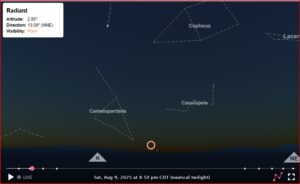
Viewing Tips for Maximum Enjoyment
- Seek dark skies: Get away from city lights to avoid light pollution.
- Block the Moon: Use trees or buildings to shield its glare while keeping a wide view of the sky.
- Let your eyes adjust: Avoid bright screens for at least 20 minutes before observing.
- Dress for comfort: Warm layers can help during late-night or pre-dawn viewing sessions.
- Look to the Northern skies: Meteors can be seen anywhere, but the Perseid come from the constellation Perseus.
The shower’s radiant lies in the constellation Perseus, high in the northern sky for observers in the Northern Hemisphere. Don’t focus too much on Perseus —keep a wide gaze for the best chance of spotting streaks.
The Science Behind the Perseids
Graham Jones, science communicator at timeanddate.com, advises: “Even with the Full Moon, it’s possible to have a great time watching a meteor shower if you position yourself strategically.”
The Perseids occur when tiny dust particles from Comet Swift-Tuttle hit Earth’s atmosphere at 37 miles per second (60 km/s), burning up in a flash of light. Some meteors display vivid colors—yellow, orange, red, or blue—depending on their chemical makeup.


